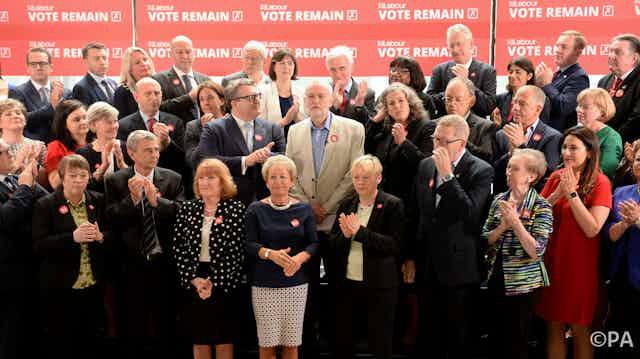Jeremy Corbyn, leader of the British Labour Party, is considering changing party rules to allow members and MPs to elect some ministers to his shadow cabinet. But such a change needs to be carefully designed to prevent Labour becoming dominated by men – a concern shared by many in the party.
The current system empowers Corbyn, as party leader, to appoint all members of the shadow cabinet. Under these rules both Corbyn and his predecessor Ed Miliband have used that power to appoint parity cabinets.
Women in the party may quibble that they didn’t get the top jobs, but this is an improvement on what Labour managed to achieve before. For women in the Labour Party there are major benefits to allowing the leader to make the top appointments alone. And there are numerous downsides to spreading decision-making on cabinet appointments to the Parliamentary Labour Party and members. Clever design of the new rules can prevent a disaster though.
Our research on cabinet recruitment in seven countries found that most party leaders are fully empowered to select their ministers. He or she can form a cabinet to balance factions, political experience, regional representation – and gender. With the right leader in place, this power can be used to produce impressive outcomes – Canadian Prime Minister Justin Trudeau’s gender parity cabinet is a recent and well known example.
The flip side of a single selector can be disastrous – Australian PM Tony Abbott appointed just one woman to his 2013 cabinet, for example. But at least with one selector it’s easy for party feminists to know what to do if a leader is not a champion of gender equality. They lobby the leader. There is just one person who needs to be convinced that women deserve equal representation in cabinet. Even better, you persuade the leader to make a public promise to appoint a certain number of women to cabinet.
Things change when powers of ministerial selection are shared. The Australian Labor Party traditionally allows MPs to choose ministers, as did British Labour when in opposition, until Miliband. And these parties lagged behind the others we studied in terms of women’s representation in cabinet. In short: the more people involved in the process of ministerial selection, the more people need to be persuaded that balancing gender in cabinet is an important goal. In Australia balancing factional disputes trumps any concerns about getting gender representation right.
Keeping an eye on balance
But there are ways round this. In the 1980s and 1990s the rules for the UK Labour shadow cabinet elections were amended a number of times to ensure that women made it into the Labour top team. New voting rules for the 1992 shadow cabinet election specified that the top three women would be included in the shadow cabinet, even if they were not among the top 18 based on votes alone.

Between 1993 and 1996 MPs were required to vote for four women with the sanction that ballot papers would otherwise be void. These rule changes meant that by the time Labour was elected to government in 1997 there were five women in the elected shadow cabinet – a record in the UK.
If Corbyn changes Labour rules on ministerial recruitment to share powers of appointment with MPs and members he also needs to build in guarantees that women in the party will not lose out. He cannot assume that MPs and members will act benevolently when other factional divides need to be so carefully balanced. As former Labour deputy leader Harriet Harman said, Labour men were “happy to have women’s votes, but not happy to share power”. And there is no evidence from party leadership elections that MPs and members elect women.

